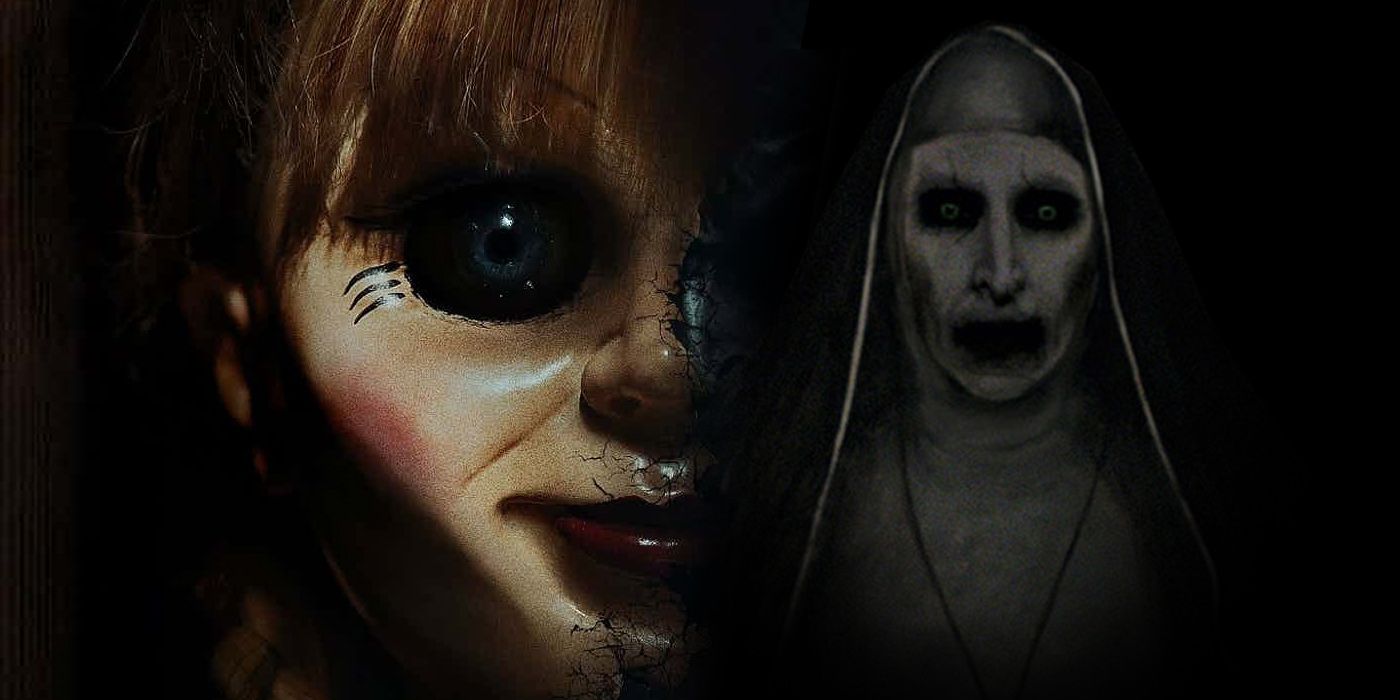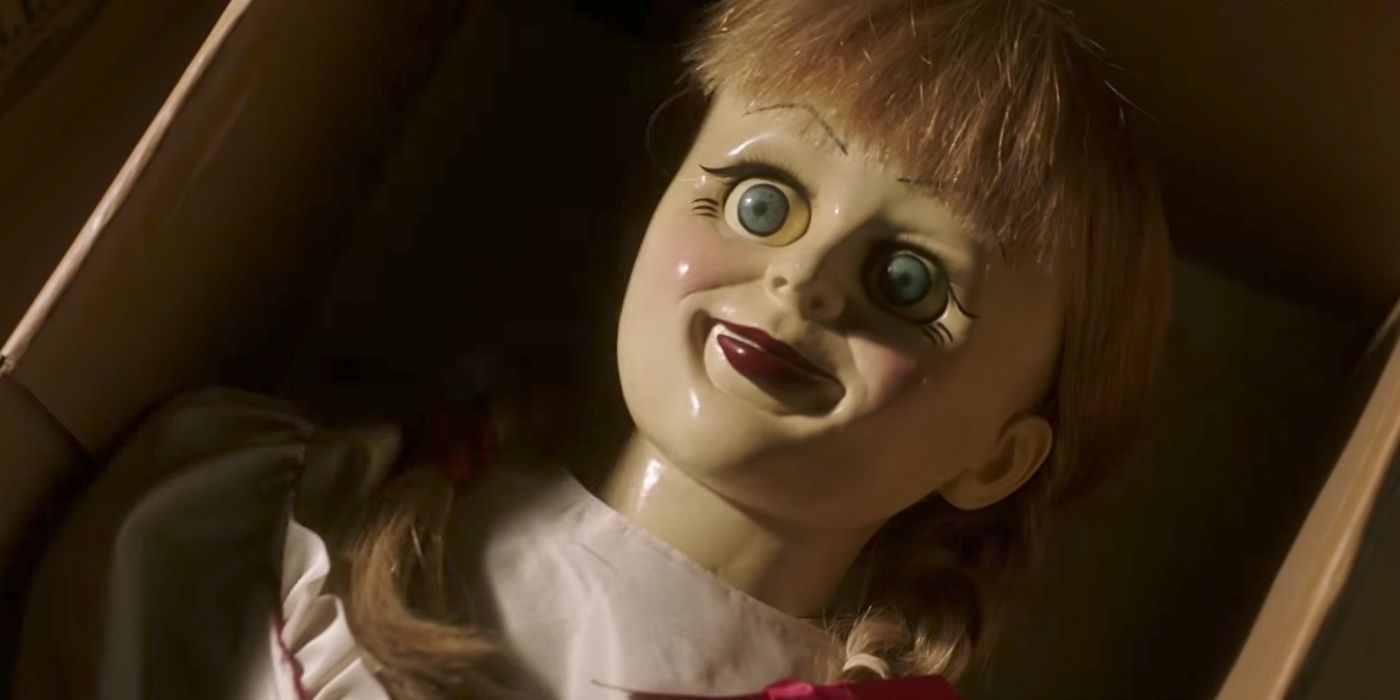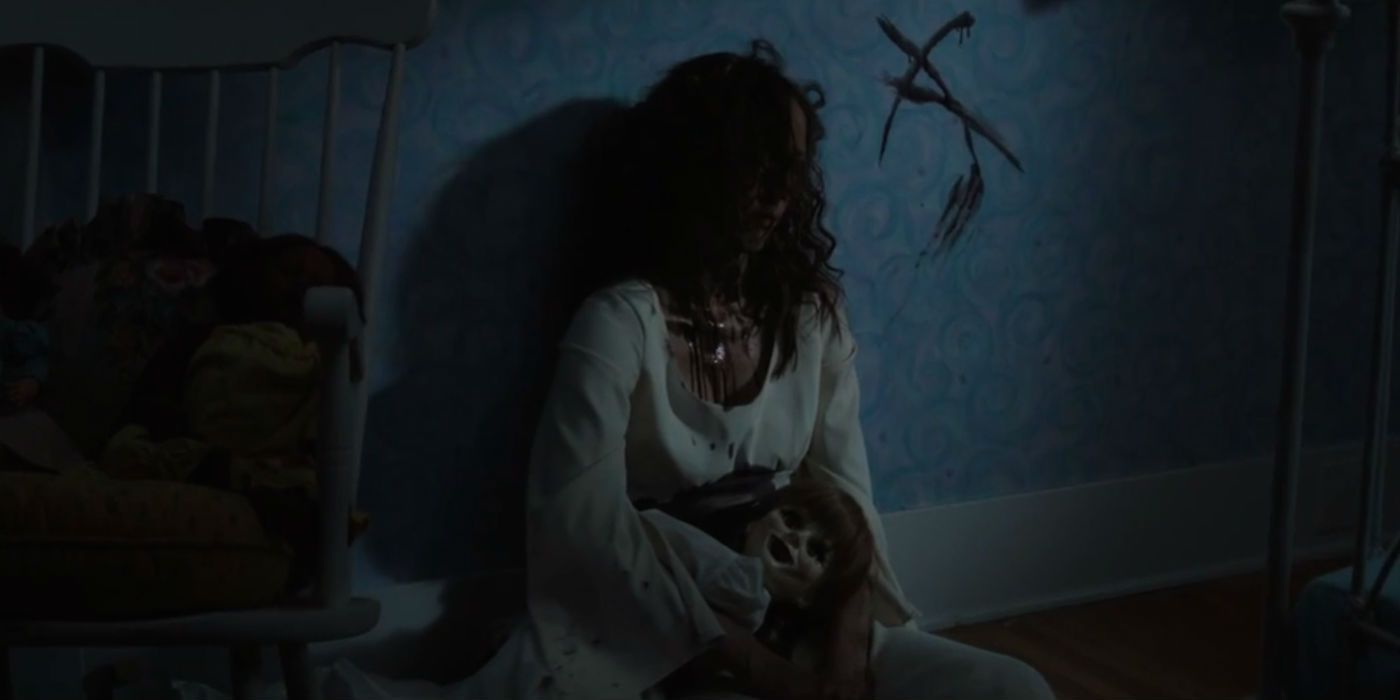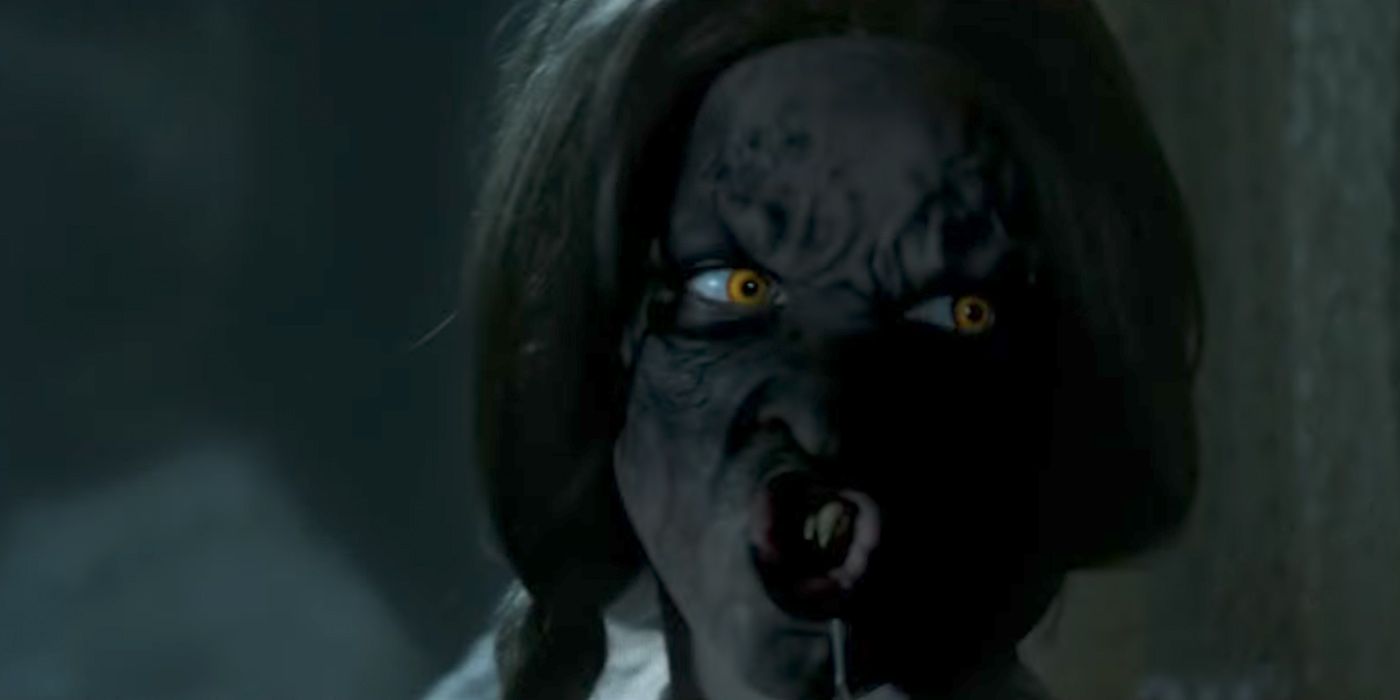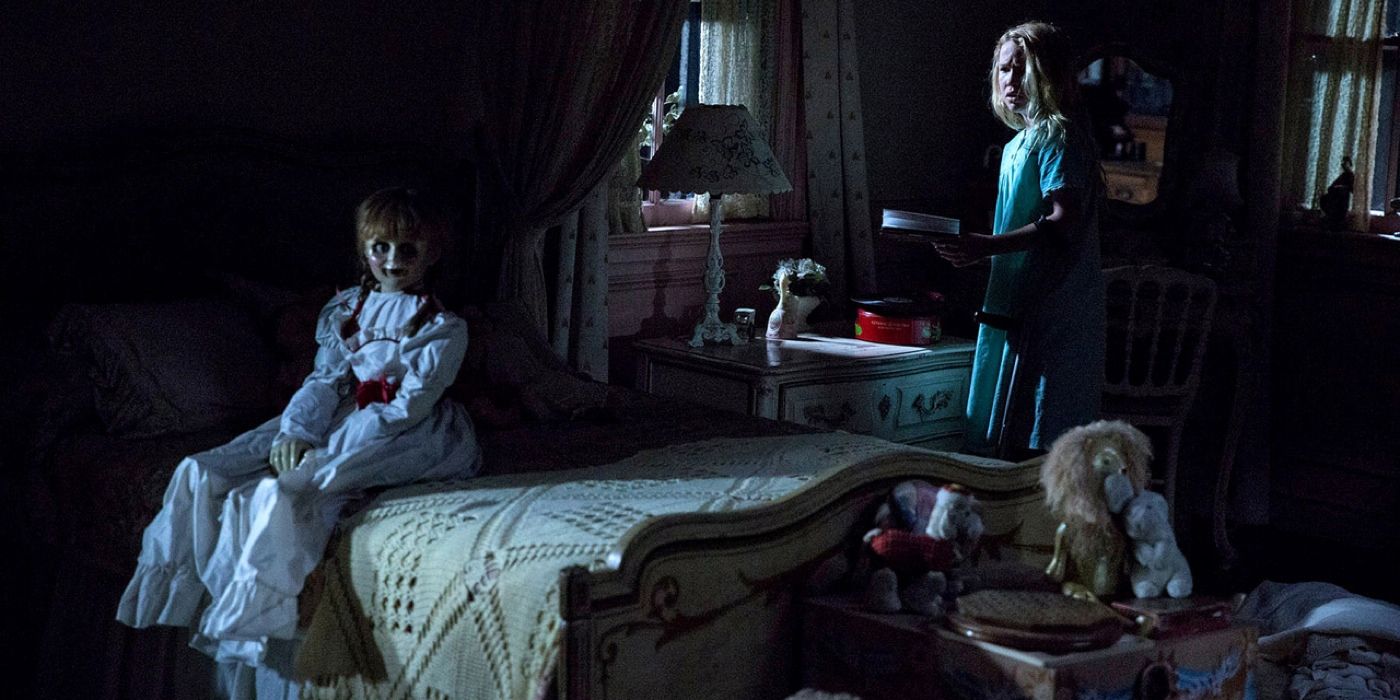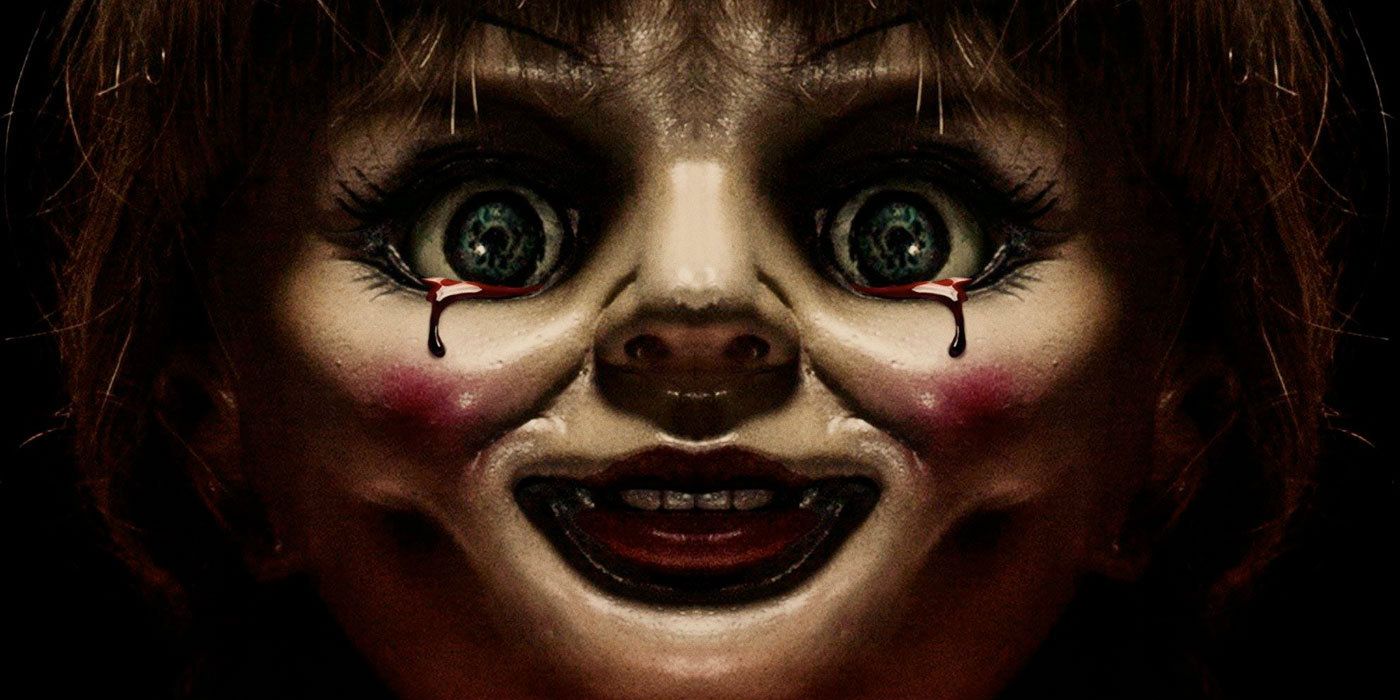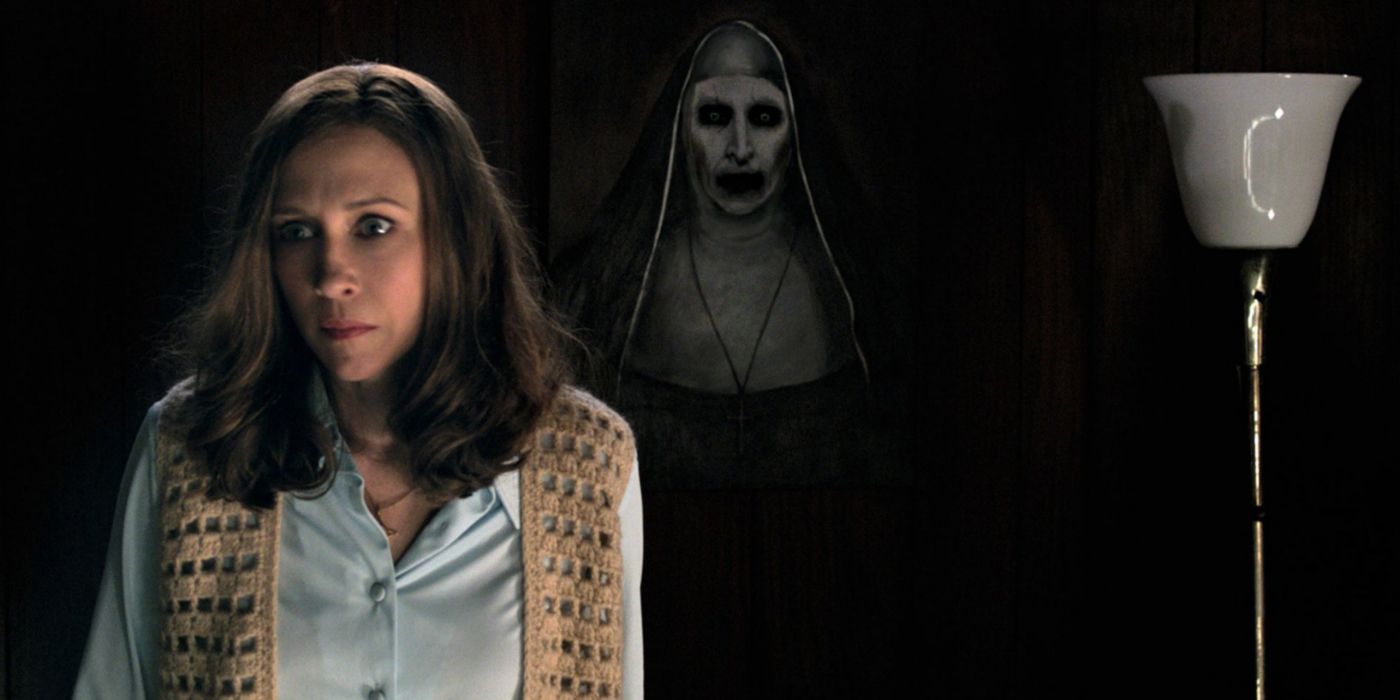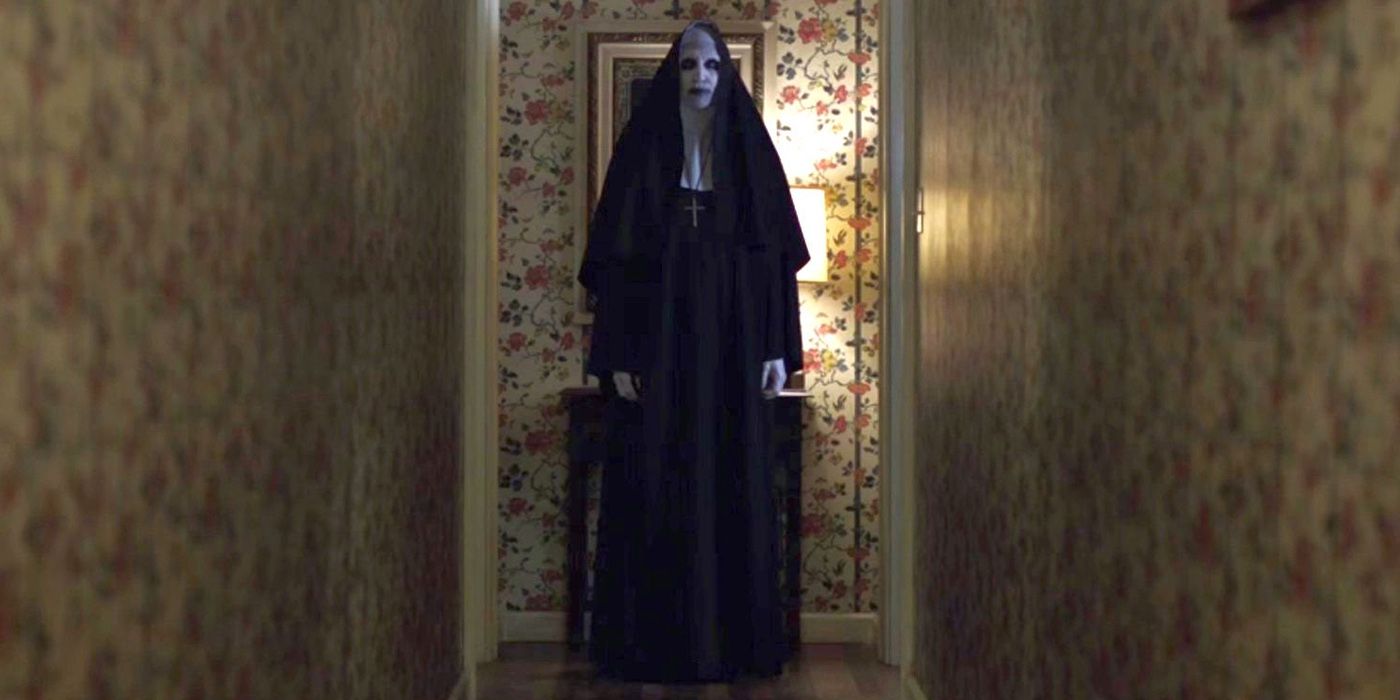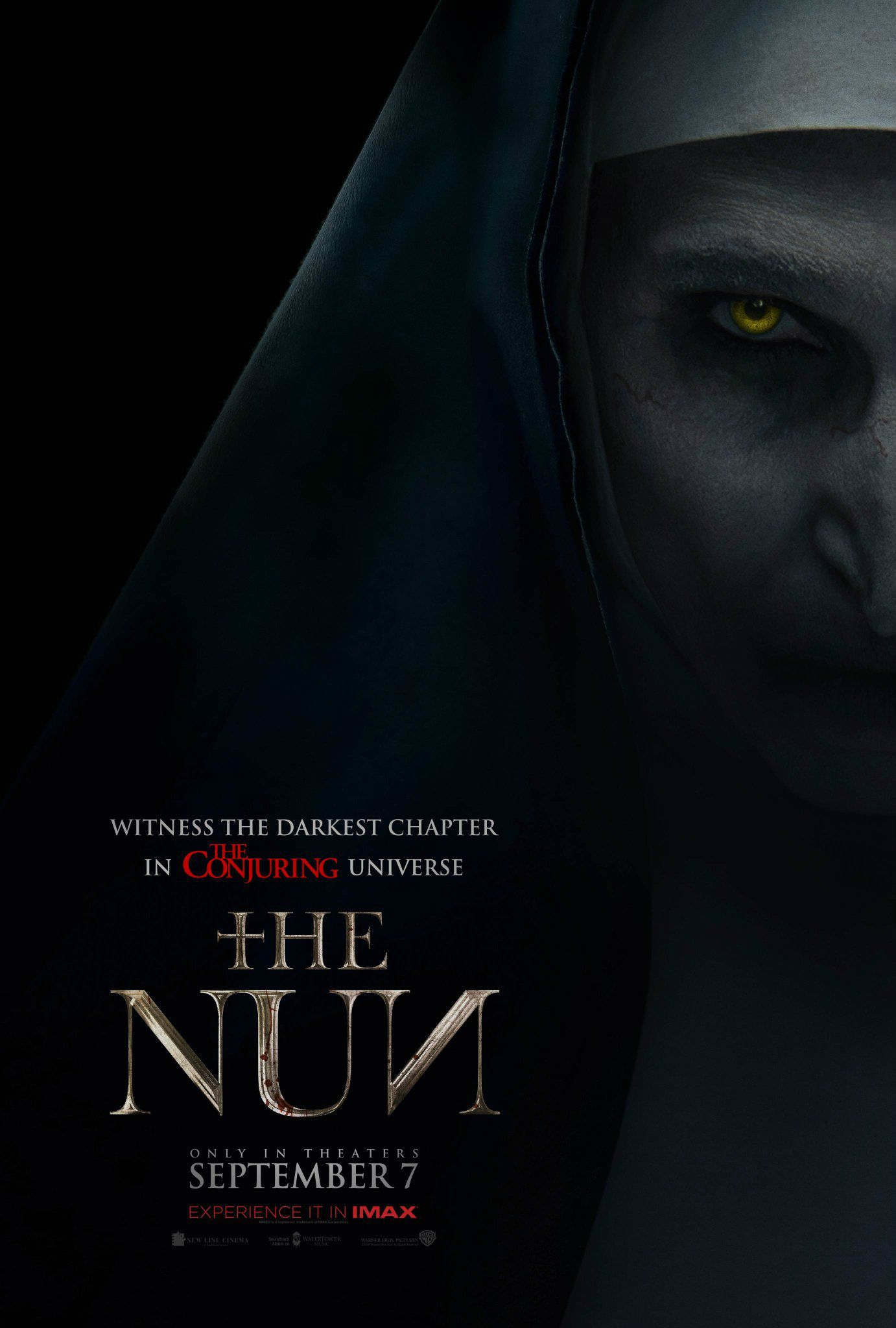Spoilers for Annabelle: Creation.
-
Annabelle: Creation is the horror highlight of the summer - a genuinely scary, incredibly fun movie with a chilling (and confusing ending), it also boasts two post-credits scenes that tie it into a much bigger world.
The Conjuring Universe just got a major expansion with the Annabelle prequel. The original spinoff was another financial success for the James Wan-masterminded horror saga but savaged by critics for its threadbare plot and empty scares. Creation ups the ante with David F. Sandberg going further into the past of the most disturbing toy this side of Chucky to deliver a cracking Friday-night horror movie that scares while tackling the effects of broken families - as well as playing wonderfully into the rest of the series.
The film is heavy on new mythology for Annabelle, connections to The Conjuring films and setting up next spinoff The Nun. Let's explore what that ending and those Marvel-esque stingers mean.
Annabelle's Origins Explained (This Page)
Annabelle's Origins Explained
Before Creation, all we knew about Annabelle was that she was an antique doll possessed by a devilish spirit known as the Ram. The specifics of either history was rather vague, but now, while we still have questions regarding the being itself, we know how the creepy toy was created and how it first became linked with possession.
In the opening of the prequel, we learn that "Annabelle" is one of an exclusive run of dolls by the Mullins Toy Company, a small outfit ran by Samuel Mullins in the 1940s that were all the rage in his urban community. It's implied in the film that the soon-to-be-evil doll was given number 1 of 100, but that Mullins didn't make any more of the set due to a personal tragedy, making her truly one-of-a-kind.
That personal tragedy was the death of his daughter. Nicknamed Bee - which we later learn that is actually short for Annabelle providing the true origin of the doll's name - she was hit by a car on the way back from church. The Mullins family spiraled into depression but then found solace in what they believed to be Bee's ghost. She haunted their house in a docile manner, convincing the grieving parents to allow her to reside in the doll.
Upon doing that, however, they quickly learn it wasn't Bee at all, but a demon wanting to find a physical form. The doll served as a first step, but now it wants to take on a living being - Esther Mullins. It attacks the mother when alone, but she's saved by her husband and the doll is locked away in a bible-wallpapered and holy water-bathed cupboard.
All seemed well until they opened their house to an orphanage (one that already has links to some dark occult magic, although we'll get to that in a bit) - in the movie itself, set in 1957, the spirit manipulates the unsuspecting girls into freeing it, allowing the Ram to possess polio sufferer Janice. After a lot of scary set-pieces wherein the spirit attempts to claim more souls, Janice escapes and gets herself adopted by the Higgins family, changing her name in a rather sadistic turn to, what else Annabelle. At this point, the spirit is seemingly gone from the doll, which is taken away by police.
The movie ends 12 years later in 1969 when Annabelle, now grown, kills her adoptive parents, bringing us right to the start of the first movie and the doll's return. Which raises an awful lot of questions...
How The Ending Connects To The Original Annabelle
The original Annabelle, a spinoff from The Conjuring that explains how its breakout "star" ended up in paranormal investigators the Warren's collection of haunted objects, for the most part follows new mother Mia, who is pursued by the haunted doll that wants to possess her newborn baby (set in a plush apartment, the film is a blatant riff on Rosemary's Baby). This was the last time the doll surfaced before the family who reported it to the Warrens.
That movie opens just as Creation ends, on the day Annabelle kills the Higgins'; Mia is given the doll by husband John, then later that night are woken up by their neighbors being attacked by two assailants. The man is shot by police but the woman - Annabelle Higgins - takes the doll and slits her throat, with a drop of her blood going in her eye socket. It's later revealed the pair were "Disciples of the Ram", a cult focused on resurrecting the spirit through ritualistic sacrifice. It's implied the opening murders brought the Ram to Annabelle, leading to its later attempts to possess Mia's daughter.
Creation thus ties its mostly self-contained story into the wider mythology with its final scene. Fans will have noticed the Higgins name and how Janice grew into the actress who played the previous Annabelle, but the real kicker comes with the reveal of Mia (played by the aptly-named Annabelle Wallis, the star of the original film). Like most prequels, it's a tight connection to the original.
Of course, the prequel reframes what we saw in 2014 somewhat. We now know that Annabelle Higgins is really a possessed Janice, meaning that rather than simply trying to resurrect the Ram, she and her accomplice were attempting something else; likely to transfer its soul into another vessel, first using the doll as a conduit. Why isn't elaborated but it's likely an age-related issue given how the spirit's later conquests involve children, whose souls are either more pure or easier to overcome.
What Does This Connection Mean?
What this does do is raise the question of the doll's return. At the end of the 1957-set portion of Creation, it's implied the doll is now free of all harmful forces, yet it somehow gets re-embroiled in the Ram's story twelve years later when it magically reappears and Annabelle re-possesses it. It's a massive coincidence for the Ram-powered Janice and the formerly-possessed doll to wind up in the same neighborhood: how did that happen and if it is just a vessel why is it still important? It may be a simple retcon; several elements of the original film, such as the ghost of 7-year-old Annabelle attacked Mia, are altered by the twist, so there's an element of free-and-lose canon here. However, the mid-credits scene may provide a deeper explanation.
First, though, it is worth pointing out there are some other connections between Annabelle: Creation and the wider Conjuring mythology: the Ram takes control of Janice by vomiting a viscous, black goo into her mouth, just like how the mother in The Conjuring was possessed by that film's demon; and the deception of welcoming a spirit into a vessel only to find it a dark force has been a repeated trick by the universe's ghouls.
There's also an incredibly cool easter egg in the final moments for real life haunting buffs; the doll handed to Janice/Annabelle when she first meets the Higgins is a replica of the real-life Annabelle doll, an acknowledgement of how this all started from a "true" story and highlighting how the Conjuring mythology has evolved since then. And, on that note, it's time to look at the expansions provided by the two post-credits scenes.
Why Annabelle Doesn't Move
Counting her brief cameo in The Conjuring 2, this is the fourth movie to feature Annabelle. Across the series, the specifics or her powers and nature of possession has varied (as already discussed, in Creation alone we got a lot of substantive changes) but through it all there's been one strict constant: you never see the doll move.
The reasons for this should be obvious to any horror die-hard. A creepy doll is incredibly scary when it's sat there staring you down with its cold glass eyes - and implied movement where it's shifted slightly when the character and audience can be utterly terrifying - but the moment it starts prancing around like a marionette it becomes laughable. Like all good horror movies, this seemed to be part of an explicit set of creepy rules.
The first Annabelle almost flirted with breaking this, having the doll levitate and start moving, but it was swiftly revealed to be the actions of the Ram and nothing quite so Child's Play. Creation doesn't even have a tease like that, keeping Annabelle's movement entirely off screen - until the movie's over, that is.
The Mid-Credits Scene Explained
The movie's mid-credits scene is incredibly simple - a slow zoom in on the Annabelle doll as the tension ramps up before... she joltingly turns to the camera before we snap-fade to black.
Of course, this quite likely a fun coda to give audiences one more scare than anything narratively substantial; indeed, the doll appears to be in the bible-layered cupboard earlier in the film, rather than the police hold-up it presumably ended up in. And, in that regard, it's a pretty damn good, forgoing a cheap cattle-prod shot for something more subtle and unnerving (the film was thankfully lacking in jolts for the most part) that breaks the "no movement" rule without being corny.
However, this may explain why the doll cycled back into the Ram's story in the original film and hint at a deeper symbiotic link between the pair. While the priests say that the doll is now empty of any evil force, there's nothing to really suggest that's true - across the whole series the church has been shown as flawed. The movement suggests that while the Ram is out, there's some deeper residual evil in Annabelle that ties her to the dark spirit. This gives the creepy doll itself more autonomy and a role in the narrative deserving of her iconic prominence.
Whether this is actually explained depends on if we get an Annabelle 3 and what it explores, but you can definitely hope; a third film seems incredibly likely given Creation's expected box office success and, if so, it'd probably be another explorative prequel given she's still in the Warrens' room of horrors.
But before we start thinking of Annabelle's future, next up is a different Conjuring spin-off. Yes, it's time to talk about The Nun and that post-credits scene.
How Annabelle: Creation Sets Up The Nun
If Annabelle was the MVP of The Conjuring, her natural successor in the sequel is totally The Nun. Unlike the doll, which existed more as an entrance into the world of the Warrens, this evil spirit was essential to the plot of The Conjuring 2; Lorraine Warren first saw her in a mid-seance vision when investigating the Amityville horror, leading to it repeatedly haunting her with visions of husband Ed's death, before it was eventually revealed as the cause of the Enfield Haunting at the center of the movie's plot. The spirit is eventually defeated when Lorraine sends it to hell by saying its name, Valak.
It was a pretty striking monster - perhaps more inherently unnerving than Annabelle, even - and so a spinoff, The Nun, was announced mere days about The Conjuring 2 came out. The film is set for a prime July 13, 2018 release and has already finished filming, with a trailer playing at SDCC.
In the spirit of shared universe expansion, Creation has some very neat teases of where we're going. The first comes from Sister Charlotte, the nun looking after the orphans. Early on in the film she shows Mullins a photograph of her and three other sisters - Maria, Anna and Lucia - at a convent in Romania, only for a shift of the light to reveal there's a fifth figure hidden in the shadows: Valak. Mullins points it out but Charlotte immediately says she has no memory of her and moves quickly on.
Later, there's another potential sighting when a wheelchair-bound Janice is pushed into the barn to be possessed by the Ram; she's moved by something wearing nun's clothes, but with horrible, black-marked skin. It's not made clear in the film what exactly this is, but the presumption would that this is Valak; the hands clearly aren't the same black claws of the spirit possessing the Ram.
Due to her heroic actions in the final act, it doesn't seem like Sister Charlotte is a threat at all, but the fact she has some related history with the Nun, quickly disregards her presence in the image, and that it appears shortly after she leaves Janice all point to some sort of relationship. Whether it's possession or a more leeching presence, it's sure to be explained in The Nun. Whatever the case, Creation subtly ties together the history of Valak and the Ram together, creating a greater threat within The Conjuring universe.
The Post-Credits Scene Explained
The post-credits scene ties things up by giving us a proper, direct tease of The Nun. A single, static shot, it shows a candle-lit hallway at the Abbey of St Carta in 1952. The lights down the corridor slowly begin to be mysteriously blown out before the ghostly visage of the Nun's face appears from the shadows.
We already knew the film was going to be set in Romania, but this gives us the specific location and date. Carta Monastery is a real-life church, again allowing the series to play with a faux real horror angle, although it's the year that's most interested; Creation is set in 1957, only five years after The Nun. Given the pre-existing connection through Sister Charlotte, some active link is to be expected.
None of the Sisters named by Charlotte are in the spinoff's current cast list but they are sure to appear - and likely Stephanie Sigman herself returning - if only to have the picture taken and really tie the Conjuring universe together.

